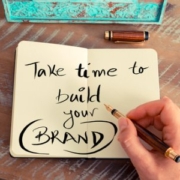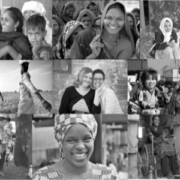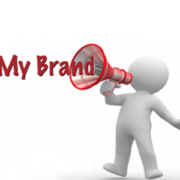Surviving Even the Most Grueling Interview Process
 Interviewing for a new job – especially one you really want – is always nerve-wracking. These days, it seems the entire process is more grueling than ever. In an annual review of the “Top 25 Most Difficult Companies To Interview”, Glassdoor.com reported that recently “…the average length of the entire interview process is increasing, from an average of 12 days to an average of 23 days.”
Interviewing for a new job – especially one you really want – is always nerve-wracking. These days, it seems the entire process is more grueling than ever. In an annual review of the “Top 25 Most Difficult Companies To Interview”, Glassdoor.com reported that recently “…the average length of the entire interview process is increasing, from an average of 12 days to an average of 23 days.”
For executive and C-level positions, your preparation must go above and beyond the standard checklist of interview do’s and don’ts. We all know the basics – dress well, have good posture, research the company thoroughly, and ask good questions – but when you’re called back multiple times, how can you ensure that you continue to present the best version of yourself?
Know and Represent Your Personal Brand
During a lengthy interview process, you will stand apart from other candidates if you know who you are as a leader, and can convey that message succinctly, with confidence and humility. Recognizing your passions –and exhibiting proven success in those professional endeavors related to your passions –can differentiate you from others.
According to Nicki Gilmour, who coaches many executives via Evolved Employer, the consulting arm of theglasshammer.com, “It is a really useful exercise to ask yourself what parts of your current or last job excited you most? You will find that it is easy to talk about many actual examples of the work when you feel good about the work that you did.”
Additionally, the more senior the role for which you are interviewing, the more you may need to internalize a leadership identity, which research has shown to happen less frequently for women and is known as the Imposter syndrome. Gracia Martore, CEO of Gannett was once quoted, “In order to lead an organization, you have to be incredibly comfortable in your own skin and the only way to do that is to be confident in who you are.”
Talking the Talk
Executive search pioneer, Russell S. Reynolds, Jr., offered “10 Job Interview Tips from a CEO Headhunter” in a 2012 Fast Company article. Here, he explained reasons for particular types of interview questions and the often counter-intuitive responses that may actually be the best answers.
For example, he shared that, “If you can’t discuss a failure or mistake, the recruiter might conclude that you don’t possess the depth of experience necessary to do the job.” The best leaders take risks, and most leaders will tell you that their failures make them better leaders. When it comes to answering negative questions or discussing failures or weaknesses, Reynolds’ advice boils down to being honest yet brief – tell the truth, but don’t dwell on the negative.
Be prepared to talk about risks. 18 female CEOs of Fortune 500 companies were interviewed for a 2012 Wall Street Journal article “How Women Can Get Ahead: Advice From Female CEOs.” Angela Braly, then-CEO of Wellpoint, was quoted, “Be open to opportunity and take risks. In fact, take the worst, the messiest, the most challenging assignment you can find, and then take control.” Those messy experiences make for great interview stories!
Finally, when it’s your turn to ask questions, choose topics that allow your experience and knowledge to shine. Andrew Sobel, author of the book “Power Questions,” suggests asking credibility-building questions, decision-making questions, and future-oriented questions. For example, the following question displays not only your institutional knowledge, but also your interest in the growth of the company: “You’ve achieved large increases in productivity over the last three years. Where do you believe future operational improvements will come from?”
Furthermore, one study published in the Journal of Experimental Psychology showed that recalling a time you felt powerful can dramatically change the outcome of a job interview. This action is called power-priming. The study reports that independent judges “significantly preferred the written and face-to-face interview performance of powerful applicants [power-primed].” Harnessing this power comes from knowing your personal brand and having the confidence to put yourself and your and your past achievements in the spotlight.
The Interview Format
Most of us are familiar with the structured interview, in which questions are prepared ahead of time and all interviewees are asked the same questions in the same order. While this is still a common practice, there are additional interview formats that are increasingly deployed in the corporate world, including case study interviews and situational interviews.
Case study interviews present candidates with a hypothetical business situation and invite the candidate to provide analysis, commentary, and solutions on the spot. Jill Smart, chief HR officer for management consulting company Accenture, explains that case study interviews, “…allow us to see how candidates may analyze and solve problems for clients and gives us a better understanding of a candidate’s thought process and ability to think critically.”
Situational interviews, on the other hand, ask interviewees to recall and share specific real life situations and examples. Situational interview questions are also frequently embedded in structured interviews.
According to George Bradt, author of “Top Executive Recruiters Agree There Are Only Three True Job Interview Questions,” interviewers are looking to know three primary things: Whether you can do the job, whether you’ll love the job, and whether you are a good fit for the company
Whether you are a fit for the company goes both ways, however. Even if your knowledge, skills, and interests align with the company’s core mission and purpose, you need to ask yourself whether or not the company’s values match your own. If everything lines up, then show your enthusiasm and land that next job.
By Nikole Grimes







